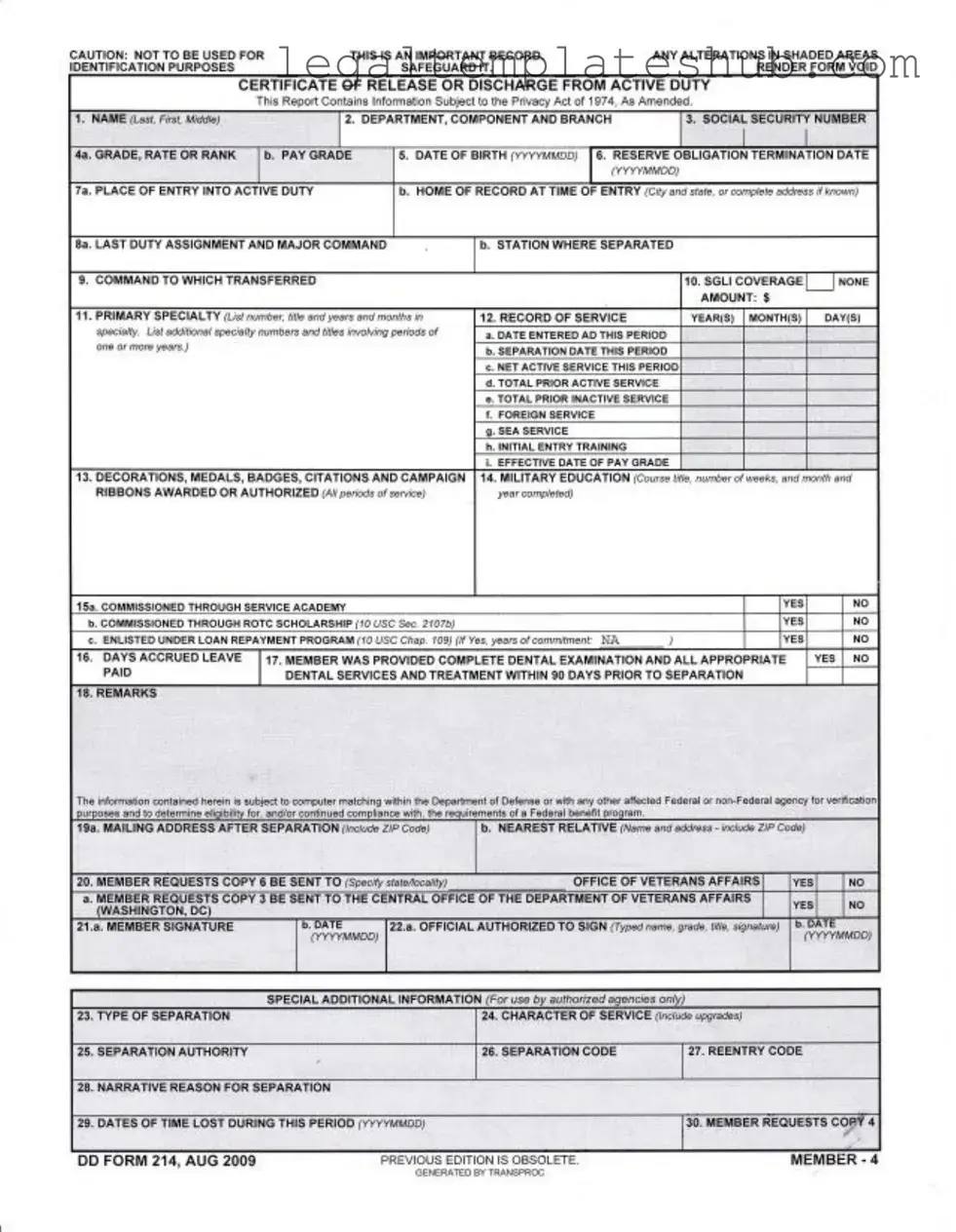Blank Dd 214 PDF Form
The DD 214 form is a crucial document that certifies a service member's release or discharge from active duty in the U.S. military. This form contains important information, including service dates, character of service, and awards received. Properly safeguarding your DD 214 is essential, as it is not intended for identification purposes and any alterations can render it void.
To fill out the DD 214 form, click the button below.
Access Editor
